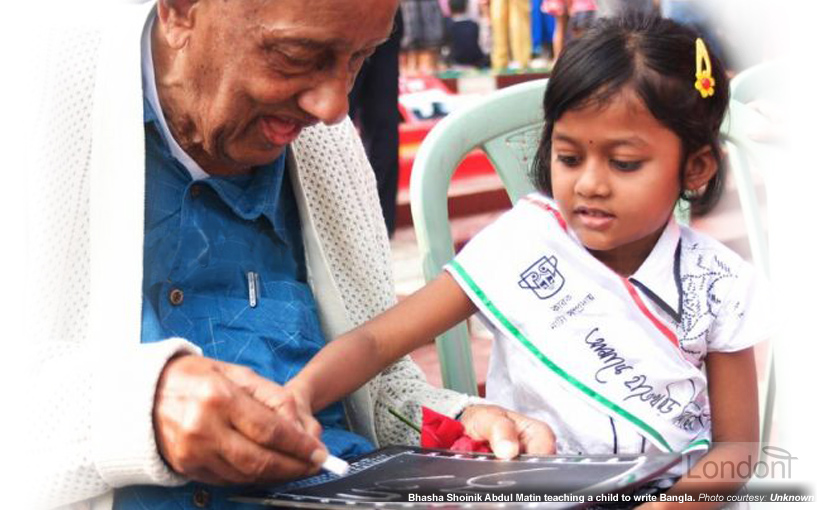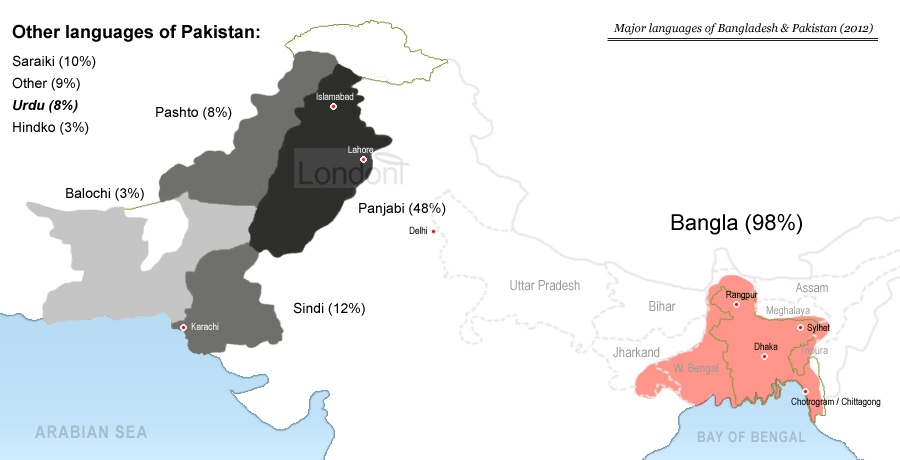
What should be the language of newly formed Pakistan?
Last updated: 5 October 2017 From the section 1952 Bhasha Andolon
The question about the State language of Pakistan was raised immediately after its independence on 14 august 1947.
The language issue was seen as the last piece of jigsaw in the two-nation theory which was formed with religion based nationalism. A common, single state language was perceived by its supporters to unify the diverse ethnic and cultural mix of Pakistan’s two wings – east and west – which was separated by 1,000 miles of India.
In the all-India context, the communal orientation of politics was also impacting on the language question. Attempts were made to posit the Muslim community, Urdu language and Urdu script against the Hindu, Hindi and Debnagari. Those who were involved in such politics of language belonged, by and large, to north India. Neither they were aware of, nor did they care to know about the feelings of the peoples of other provinces towards their mother languages.
Anisuzzaman, Professor Emeritus at Dhaka University
The new nation of Pakistan had a population of 77.5 million in 1951, the year prior to the killing of Bengali language martyrs. Out of this 77.5 million, 56% (over 43 million) were based in East Pakistan where Bangla was spoken by almost everyone. As such the Bengalis were the majority community of Pakistan.
In West Pakistan, however, there was a greater linguistic diversity. The vast majority (over 28%) spoke Punjabi, which included Saraiki, whilst a substantial number spoke Pashto (7.1%) and Sindhi (5.8%). Urdu, which was widely understood in Pakistan, was the mother tongue of a minority (7%) of the population of Pakistan. This minority came from India, mostly after the creation of Pakistan in 1947, and were called "Muhajir" (refugee or immigrant).
'Muhajir' was originally used to describe the early converts to Islam who migrated with Prophet Muhammad (peace be upon him) from Makkah to Medina after facing religious persecution. These migrants were referred to as Muhajirun.
In 1947, as the new Government of Pakistan established its capital in the southern city of Karachi (in the Sindh province), a large number of Muslim refugees from northern India came and settled down in the city.
The local Sindhi population welcomed them. The refugees looked upon themselves as the 'founding fathers' of Pakistan, having performed hijrat for the sake of the new Muslim nation. In the early years of Pakistan, Muhajir was an all-inclusive category used by people with pride. Migration was represented in terms of pilgrimage and the existing ethnic and regional differences were played down to emphasize the unity and brotherhood which the new nation symbolised.
Tai Yong Tan & Gyanesh Kudaisya, authors of "The Aftermath of Partition in South Asia" (2000)

Source: CIA World Factbook - Bangladesh and CIA World Factbook - Pakistan
As a symbol of unity and in order to create a unified ‘Pakistani’ identity, the government of Pakistan and the Pakistani elites promoted Urdu as the state language.
In this symbolic role, it serves the political purpose of resisting ethnicity, which otherwise would break the federation. As for the provision that other Pakistani languages may be used, it is explained that the state, being democratic and sensitive to the rights of the federating units, allows the use of provincial languages if desired.
Dr. Tariq Rahman, Professor at Quaid-i-Azam University, Pakistan
This privileging of Urdu provoked a hostile reaction from the east Pakistanis where over 90% spoke Bengali.
There was a growing sense of deprivation and exploitation in East Pakistan and a realisation that a new form of colonialism had replaced British imperialism.
